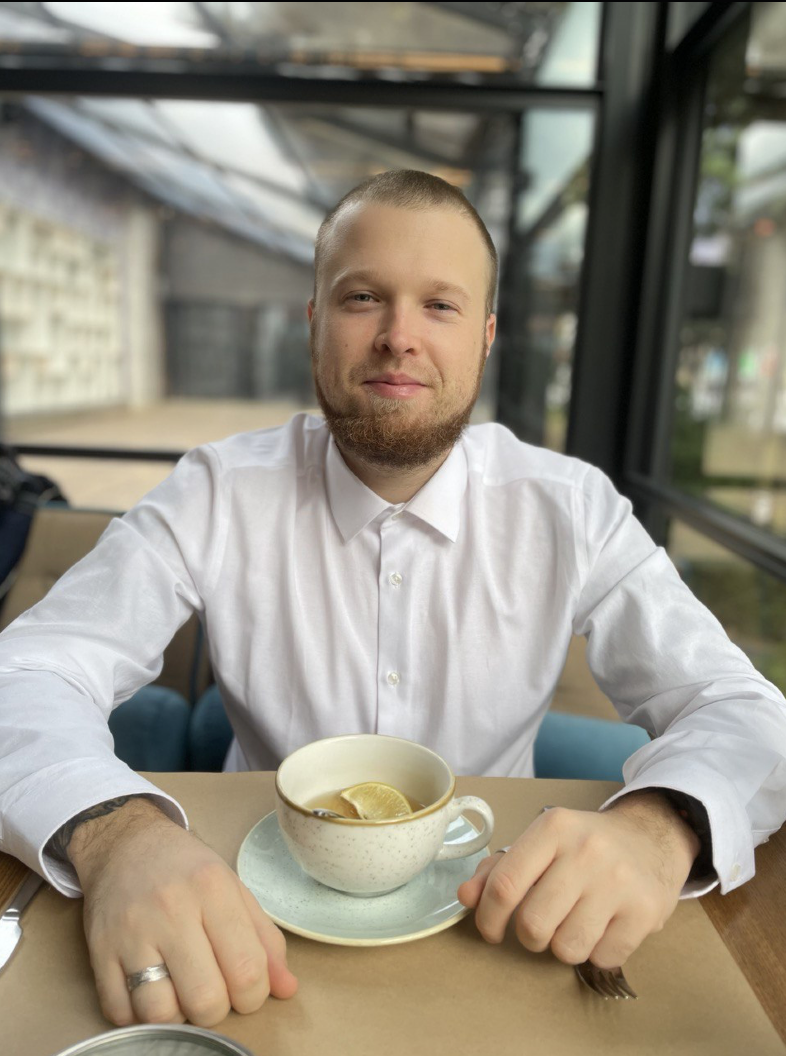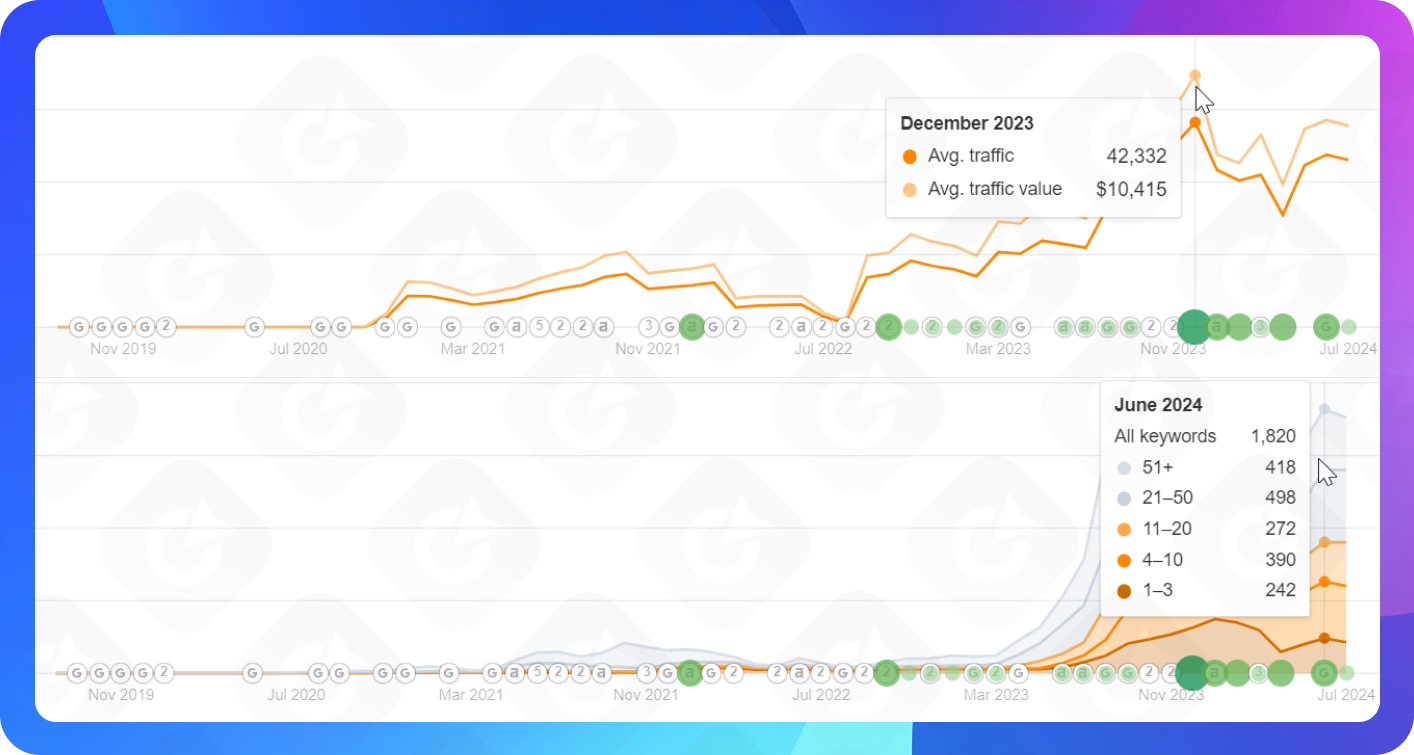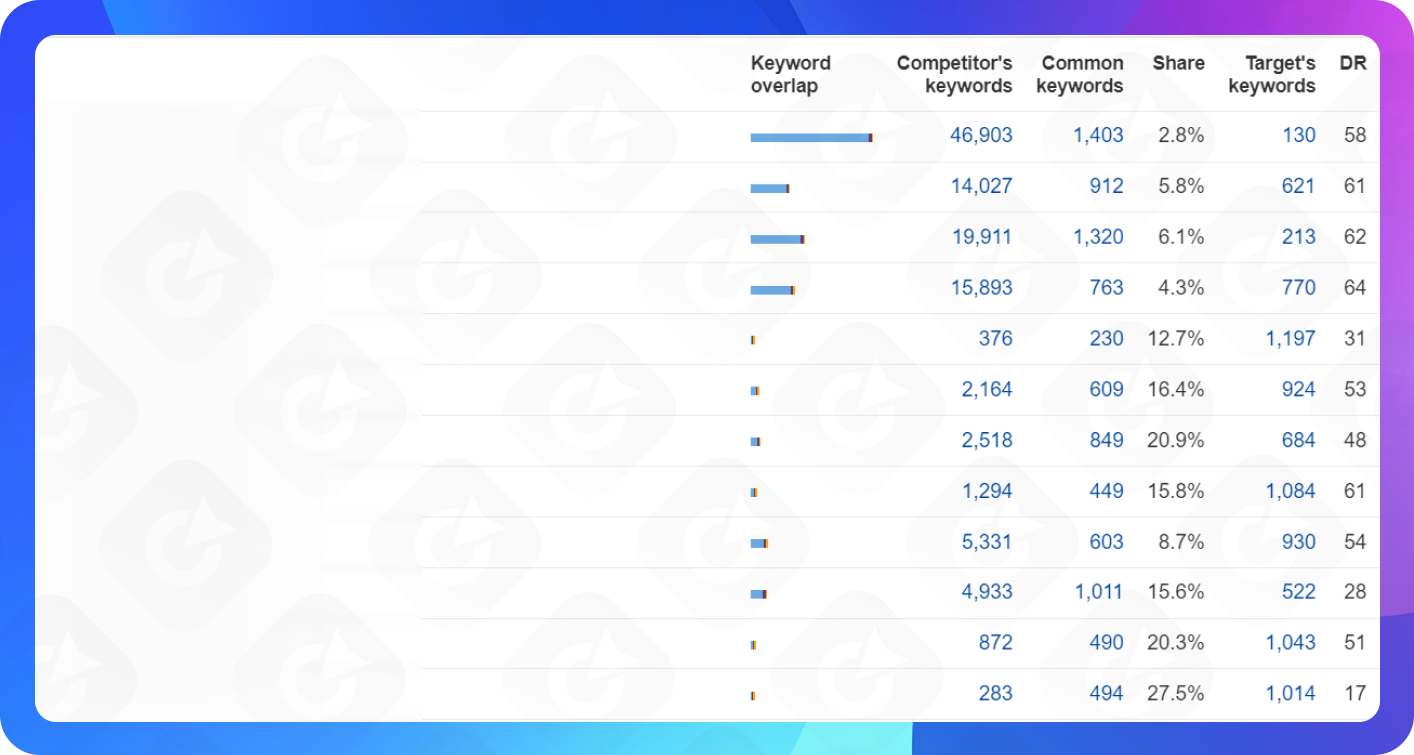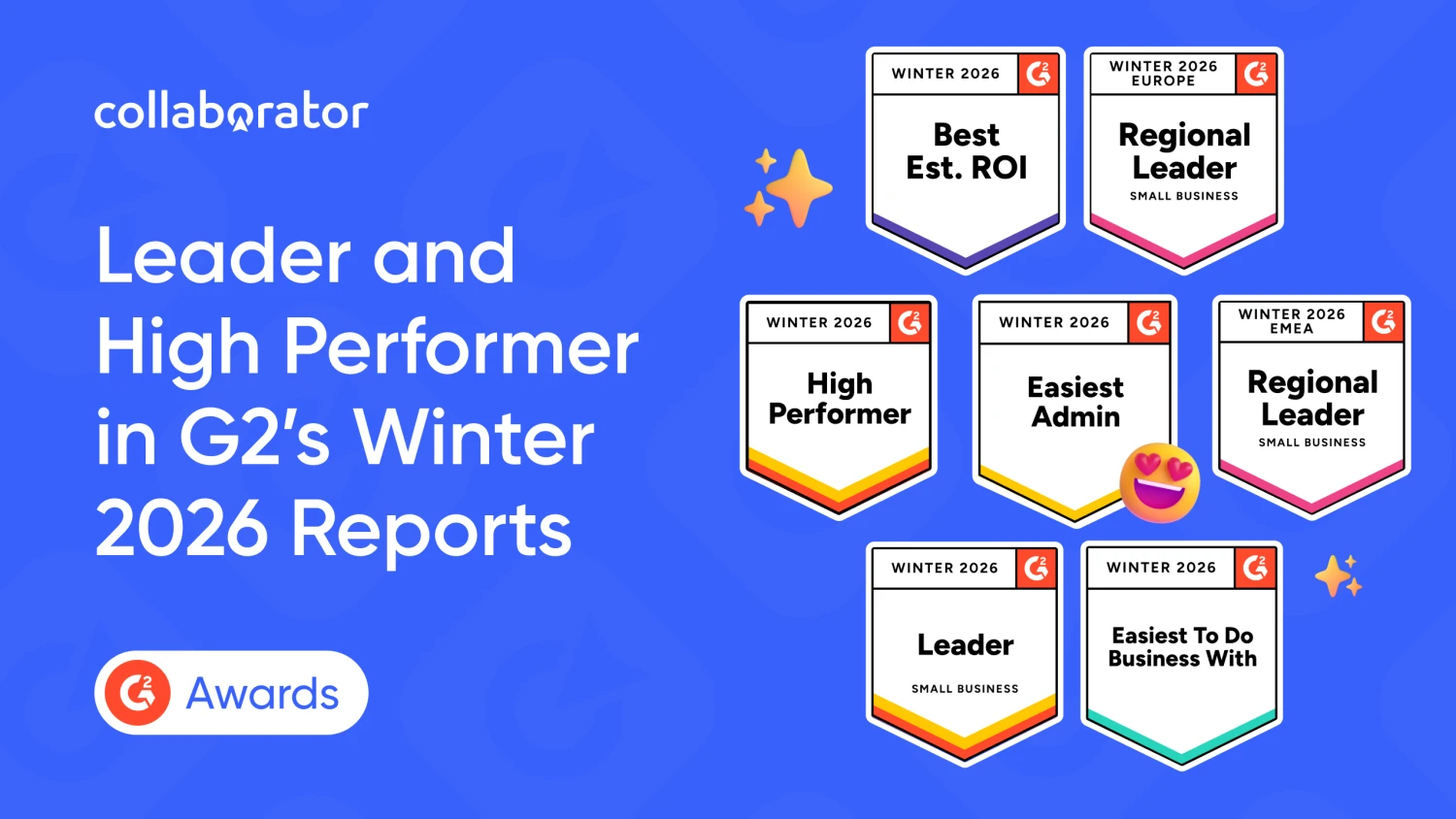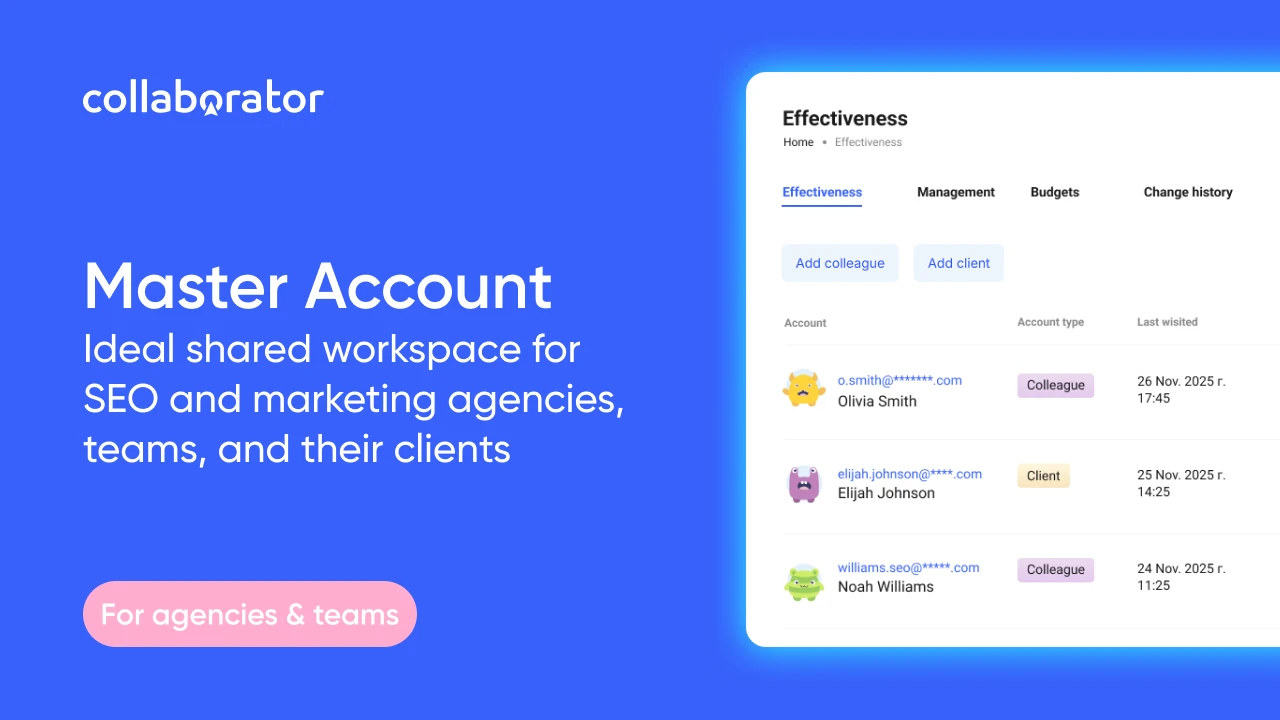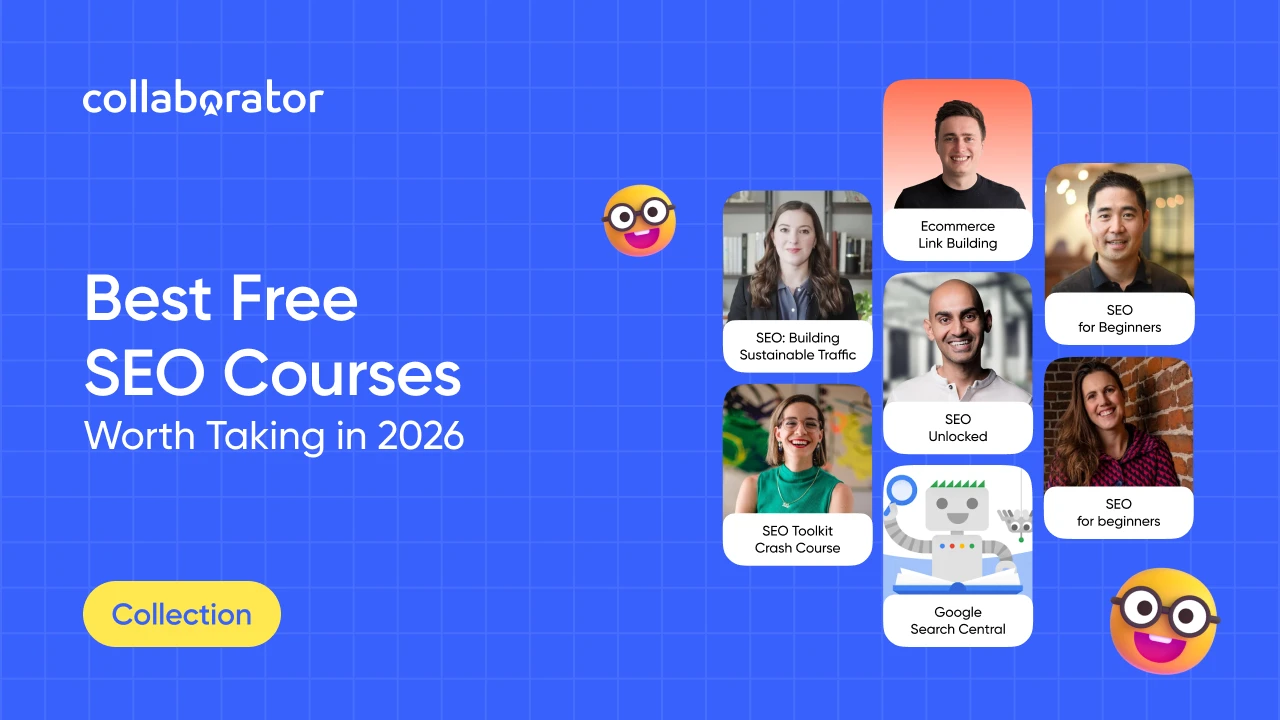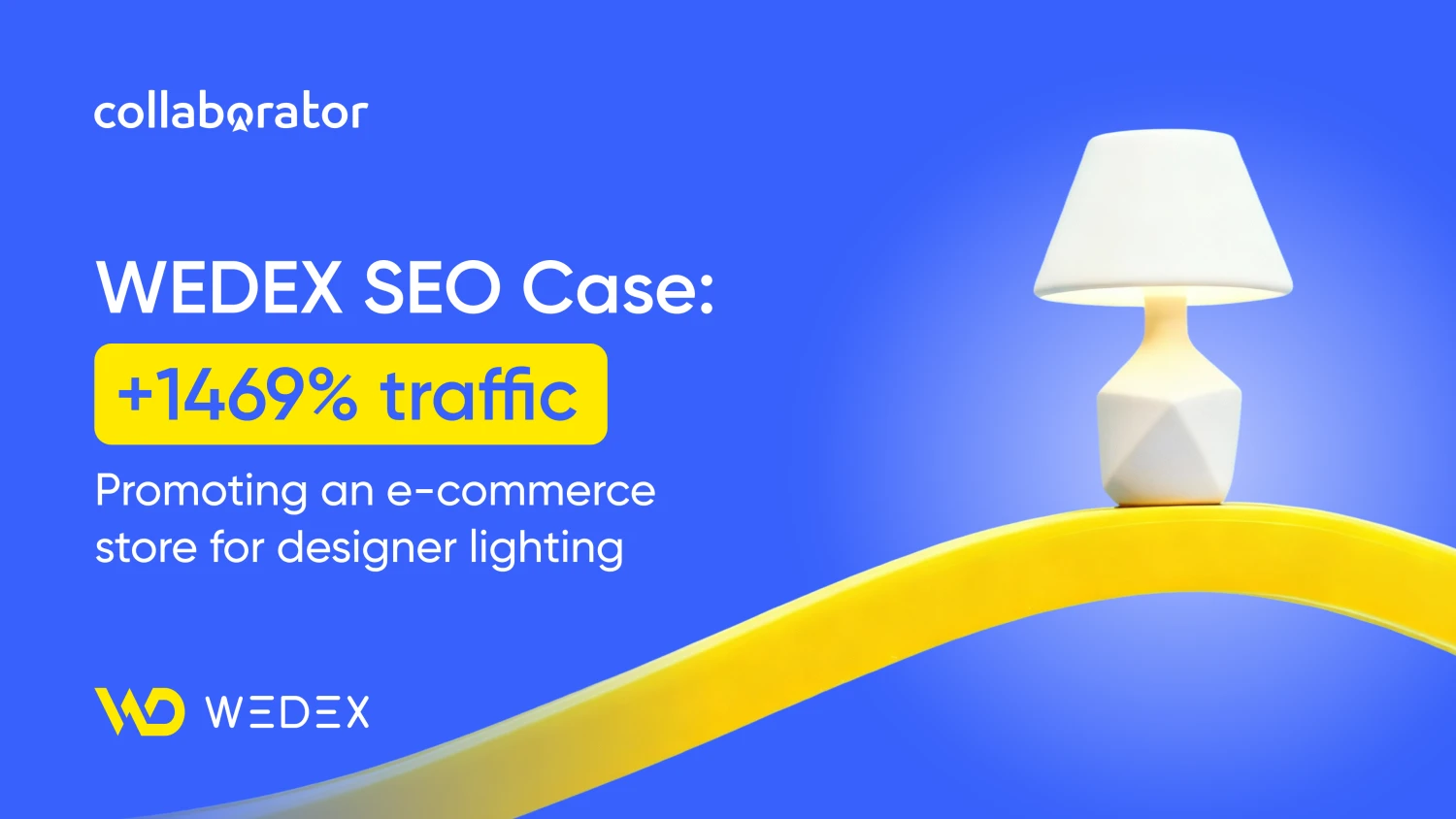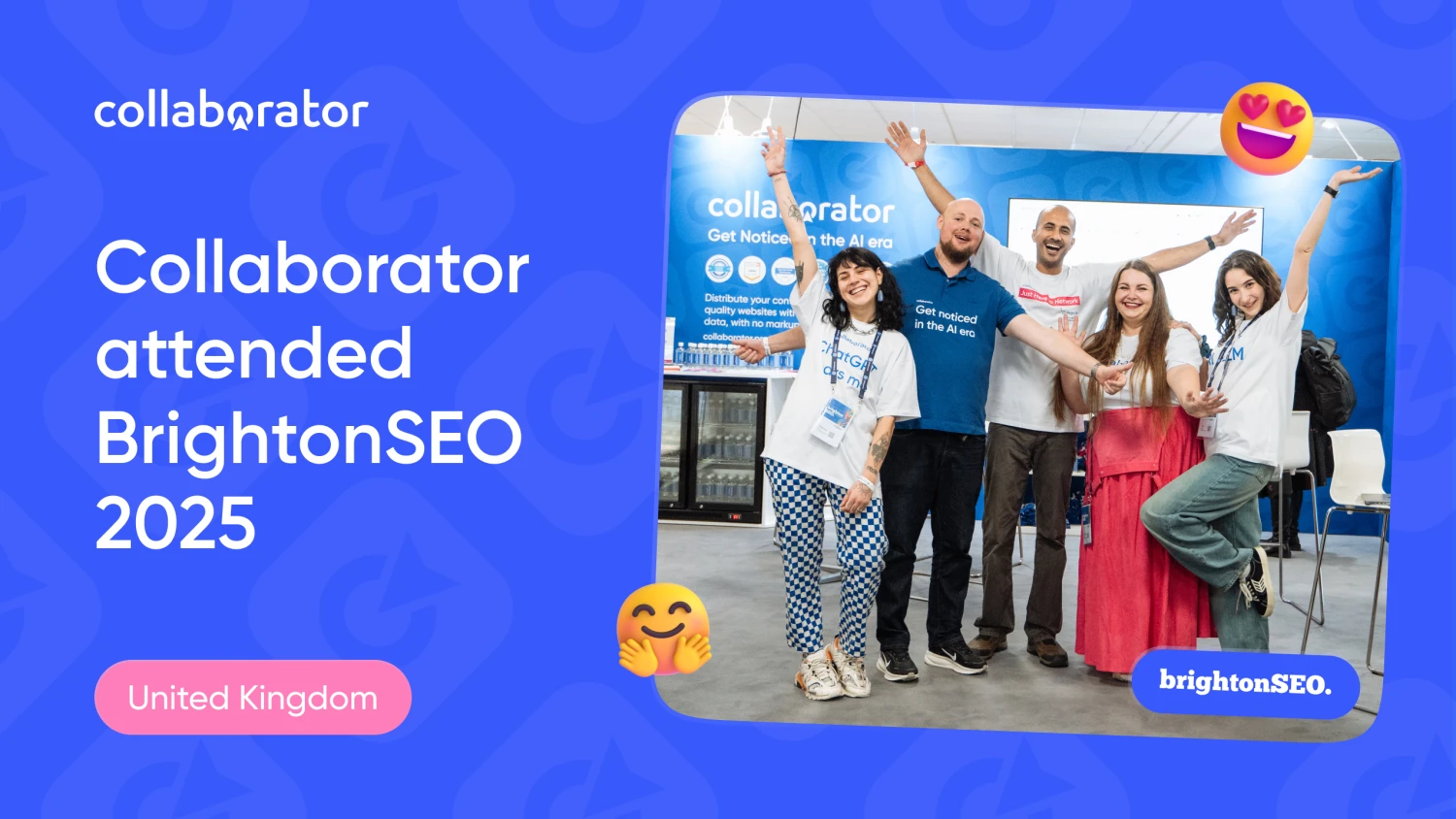Fintech SEO Case Study: Strategies and Trends Proven To Drive Leads and 200% Traffic Growth
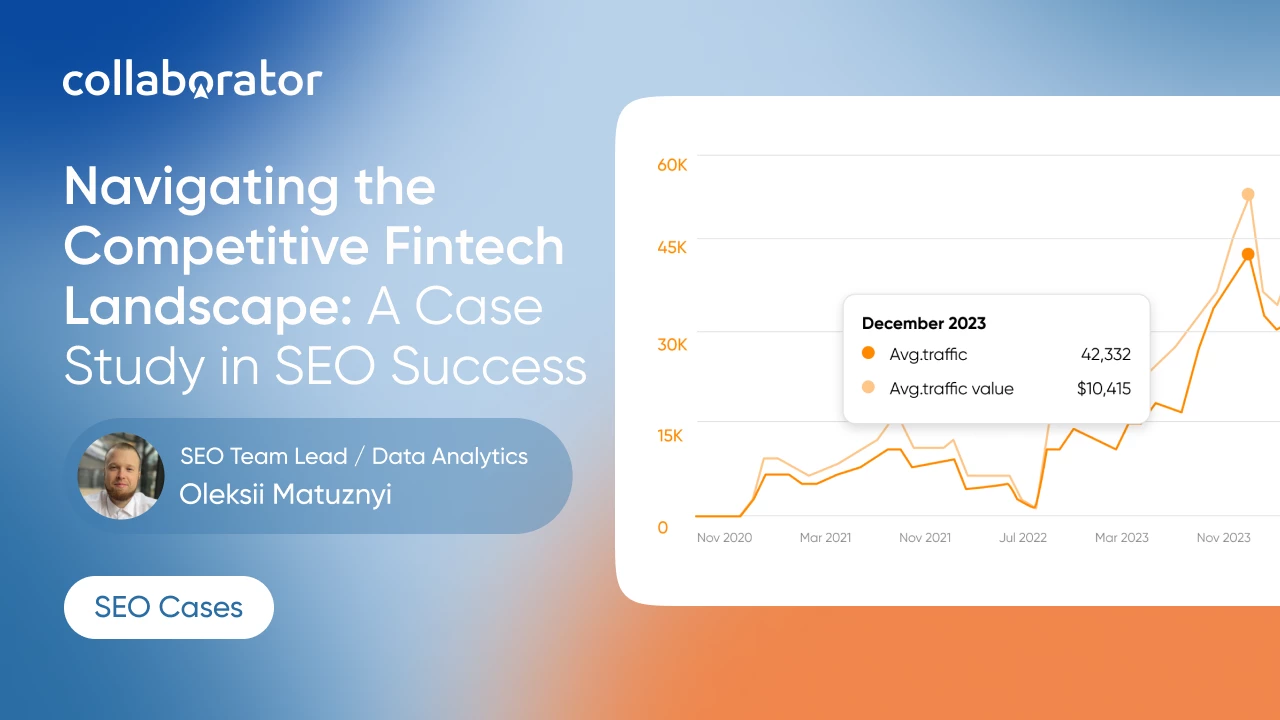
Key highlights of this fintech SEO success story:
- 200% increase in non-organic traffic
- Over 1,800 keywords ranking in top positions
- 150 new high-quality backlinks acquired
- Significant technical improvements, including website redesign and enhanced page load speeds.
This article will explore how a comprehensive SEO approach, coupled with technical improvements and content optimization, led to remarkable growth for this particular fintech SEO project. We will dive into the strategies employed, the challenges faced, and the critical success factors that contributed to a 200% increase in non-organic traffic and significant improvements in keyword rankings and backlink profile.
Background and Initial Challenges
The fintech industry is notably competitive. Initially, the project faced numerous technical challenges, and the competition was stiff, as evidenced by data from Ahrefs.
Below are the issues that the client's website was facing, revealed upon an audit.
- High Competition.
The loans and microloans sector is saturated with both traditional financial institutions and new fintech startups, making it difficult to gain visibility and market share. - Technical Issues.
The client's website had numerous technical challenges that were hindering its performance in search engine results pages. - Limited Online Visibility.
Despite offering innovative financial solutions, the project struggled to rank for relevant fintech industry keywords and attract organic traffic. - Lack of Content Strategy.
There was no structured approach to content creation and optimization, resulting in missed opportunities to engage potential customers and improve search rankings.
With these challenges in mind, we embarked on a multi-level SEO campaign designed to address each of these issues systematically.
10+ Strategies for Fintech SEO Promotion
On-Page Optimization
After completing a comprehensive website audit, we identified several on-page SEO issues. Below is the step-by-step process of improving a fintech website's performance with on-page optimization.
We have made several improvements to the website, which are outlined below:
- Enhanced Meta Tags, Headers, and Content.
We updated the meta tags and headers of all the main pages to better align with user search queries. This included adding relevant keywords, optimizing the length and structure of the headers, and improving the descriptions. Additionally, we rewrote the content to make it more informative and useful for users, which has helped increase the time spent on the website.
- Improved Internal Linking Structure.
We developed a new internal linking structure that improved site navigation and ensured a more even distribution of page weight. This involved adding links to important pages within the content and creating thematic link groups to make it easier to access related materials.
- Multilingual Support.
We added multilingual support to the site, which helped attract a broader audience and increase visitors from various countries. This involved translating all the main pages and content, as well as creating separate language versions with tailored SEO settings for each version.
Technical Optimization
- Page Load Speed Analysis and Improvements.
We conducted page speed tests using various tools (such as Google PageSpeed Insights and GTmetrix) to identify key factors slowing down the website. Based on this analysis, we made the necessary changes to enhance the loading speed.
- Code Error Fixes.
We identified and fixed code errors affecting the platform's performance and functionality. This included resolving issues with JavaScript, HTML, and CSS, as well as optimizing the code for better compatibility across different browsers.
- Image Optimization.
We reduced image sizes without sacrificing quality by using modern formats and compression techniques. This significantly decreased page load times and enhanced the overall user experience.
- Mobile Optimization.
We adapted design for mobile devices to ensure a smooth and fast experience across all device types. This included enhancing the design's responsiveness, optimizing the mobile interface, and ensuring quick page load times on mobile devices.
- Site Layout Enhancements.
We revamped the layout to make it more logical and structured. This included fixing layout errors, enhancing the visual hierarchy, and creating more user-friendly navigation.
- SEO for Multilingual Versions.
We optimized language versions to ensure proper indexing by search engines. This involved setting up hreflang tags, creating separate sitemaps for each language version, and tailoring the content to suit the specifics of each language.
- Crawl Budget Optimization.
We excluded unnecessary pages from indexing (such as duplicate content pages and administrative interface pages) and optimized the sitemap to ensure that search engines use their resources more efficiently on important pages. This improved overall indexing effectiveness and helped achieve better search engine rankings.
Link Building
We implemented an external link-building strategy that involved both Tier-1 and Tier-2 links to enhance the website's authority and search engine rankings. For this, we used Collaborator.pro to acquire high-quality backlinks without the need for extensive outreach efforts.
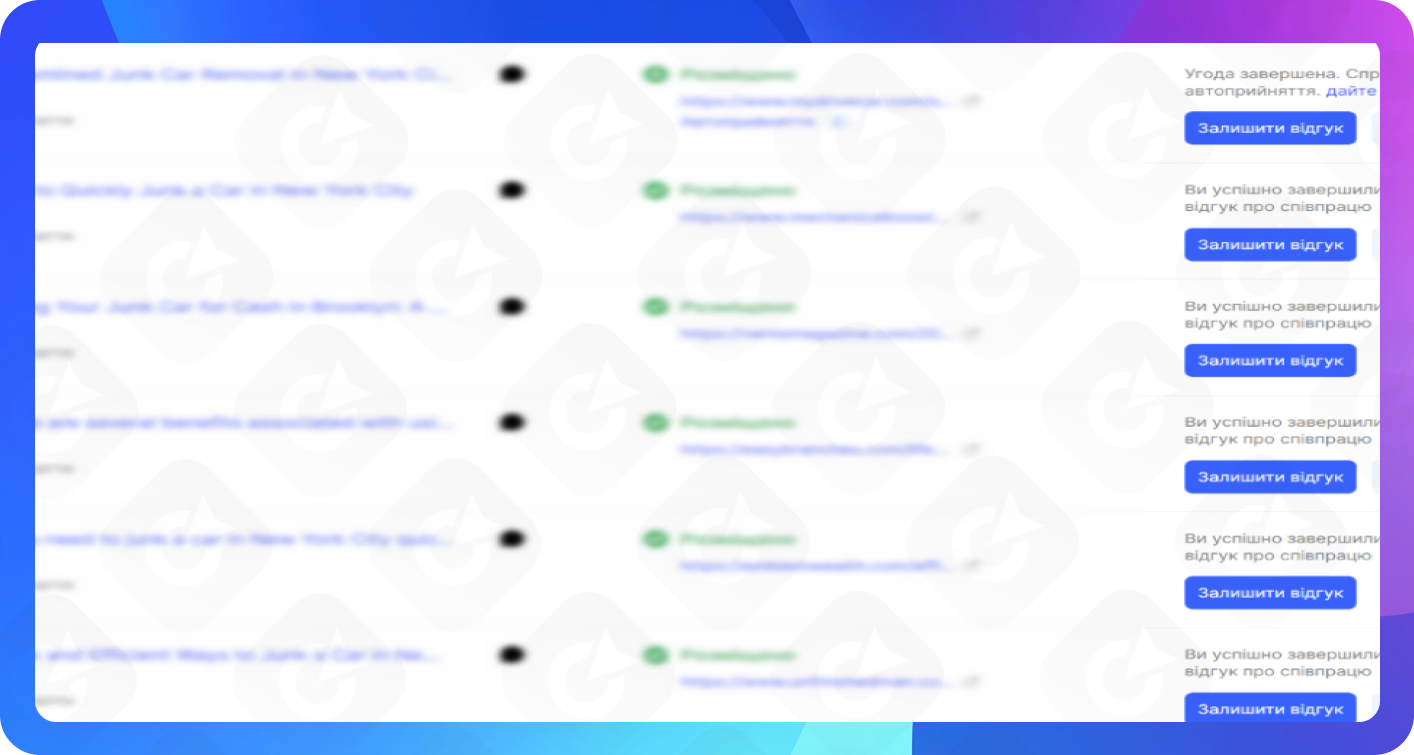
A screenshot of some of the deals completed in Collaborator.pro
Collaborator.pro allowed us to focus on obtaining links from relevant GEO locations, ensuring that the backlinks were not only authoritative but also highly relevant to our target audience. This approach significantly boosted the website's credibility and visibility in search results.
Start Promoting Your Business Today
Results and Impact
The implementation of these strategies led to significant improvements across various key performance indicators.
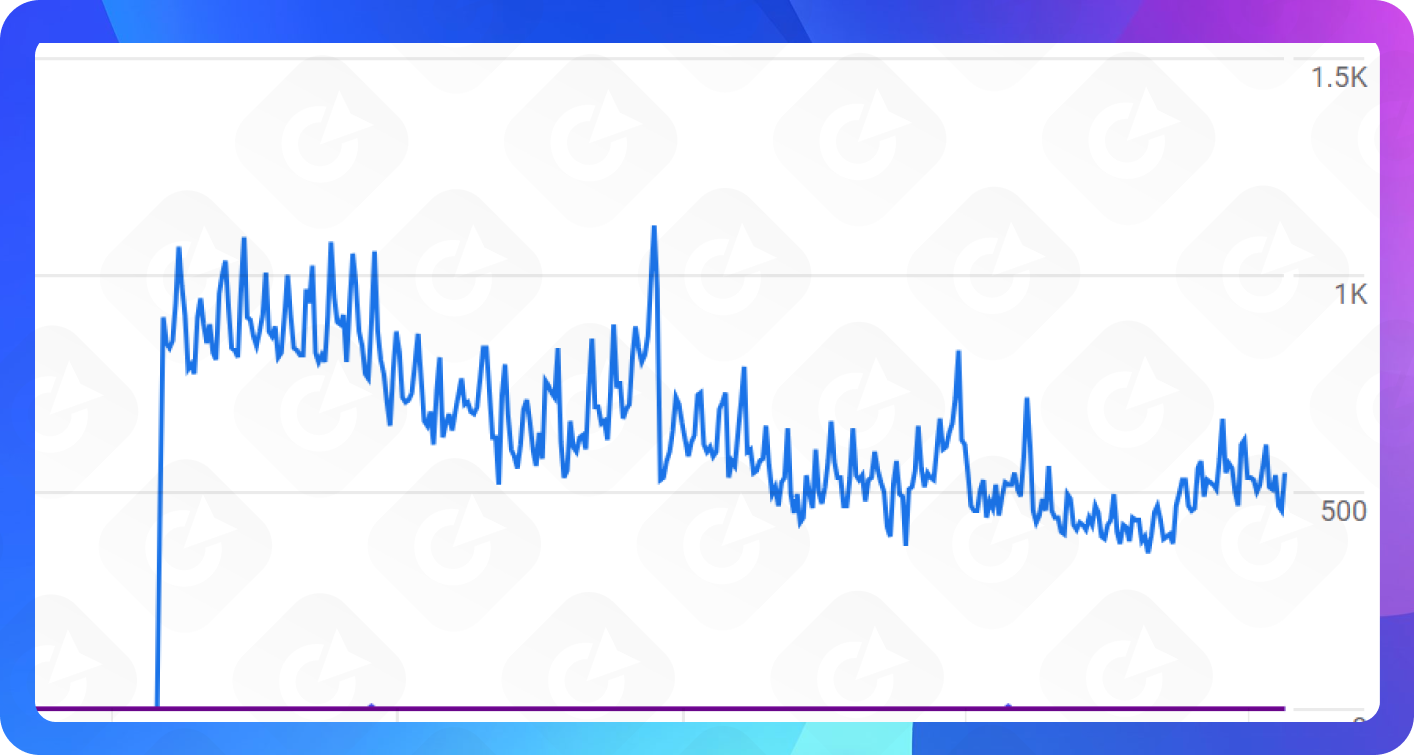 Organic traffic from search engines after implementing GA4 analytics over the last two years.
Organic traffic from search engines after implementing GA4 analytics over the last two years.
The key achievements and critical success factors of the project are outlined below:
- Traffic Growth.
Over the course of the year-long partnership, the website experienced a substantial 200% increase in non-branded organic traffic. According to Google Analytics 4 data collected over the past two years, there was a steady rise in overall organic traffic, indicating significant growth.
- Keyword Rankings.
The number of keywords ranking in top positions grew to over 1,800. This improvement in keyword rankings not only increased the website's visibility but also contributed significantly to the surge in organic traffic.
- Backlink Profile.
We also strengthened the backlink profile, acquiring 150 new high-quality backlinks. These links enhanced the company’s authority and bolstered trust with search engines, contributing to its overall performance.
- Technical Improvements.
Technical improvements played a crucial role in enhancing the user experience and the website's functionality. A website redesign, coupled with page load speed enhancements, improved both user experience and search engine crawlability. Additionally, an improved interlinking structure and the creation of new blog content contributed to longer user sessions and facilitated better content discovery.
- Market Position.
In the fintech industry, the project solidified its position as a leading player in the loans and microloans sector. The increased visibility and traffic not only elevated the company’s market position but also led to higher conversion rates and business growth.
Critical Success Factors
Several factors were crucial in achieving these remarkable results.
- Conducting a thorough audit.
By auditing the website from both technical and on-page perspective, as well as evaluating the strength of the existing backlink profile, we were able to determine the weak spots and base our strategy on improving these weaknesses.
- Comprehensive Approach.
By addressing technical, on-page, and off-page aspects simultaneously, we created a holistic SEO strategy that yielded synergistic benefits.
- Focus on Quality Content.
The emphasis on creating valuable, informative content not only improved search rankings but also established the client as an authority in the fintech space.
- Continuous Optimization.
Regular monitoring and analysis allowed for quick adjustments to the strategy, ensuring optimal performance throughout the campaign.
- Technical Excellence.
The technical improvements laid a solid foundation for all other SEO efforts, ensuring that the site was fast, accessible, and search engine-friendly.
- Strategic Link Building.
The carefully planned link building campaign boosted the website authority without resorting to black-hat tactics.
- Client Collaboration.
Transparent and regular communication with the client ensured alignment of goals and quick implementation of necessary changes.
Challenges and Lessons Learned
While the overall campaign was highly successful, it wasn't without its challenges.
1. Initial Link Building Setbacks.
Some early external link building strategies proved ineffective. However, quick identification of these issues allowed for rapid adjustment of tactics.
2. Competitive Landscape.
The highly competitive nature of the fintech niche required constant vigilance and adaptation of strategies to stay ahead.
3. Technical Complexity.
Implementing technical changes on a live financial platform required careful planning and execution to avoid disruptions to service.
These challenges provided valuable lessons:
- Flexibility is key in SEO, especially in competitive niches.
- Regular testing and monitoring of strategies allow for quick course corrections.
- A balance must be struck between aggressive optimization and maintaining site stability and security.
Future Outlook
The success of this SEO campaign has led to an interesting shift in the client's marketing strategy. While the client has decided to pause active SEO efforts as this channel is now generating substantial revenue, the focus has shifted towards paid advertising to complement the strong organic presence.
However, recognizing the long-term value of SEO, we continue to strengthen the backlink profile on a monthly basis to maintain high search engine rankings and ensure sustained success.
This approach highlights the importance of a balanced digital marketing strategy, where different channels work in harmony to achieve overall business objectives.
Conclusion
This case study demonstrates the power of a well-executed SEO strategy in the competitive fintech landscape. By addressing technical issues, optimizing on-page elements, creating high-quality content, and implementing effective link-building tactics, we were able to achieve remarkable growth in organic traffic and solidify the client's market position.
The fintech industry will undoubtedly continue to evolve, presenting new challenges and opportunities for digital marketers. By staying adaptable, focusing on user needs, and leveraging the latest SEO best practices, fintech companies can improve their visibility, attract more customers, and achieve sustainable growth in this dynamic sector.
The Collaborator’s team thanks Oleksii for sharing this incredible SEO journey with us. We wish him, and you all, best of luck in your future SEO endeavors 🙂
